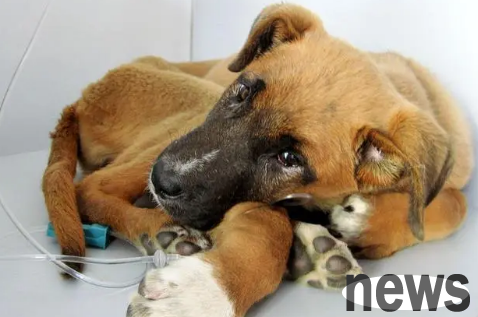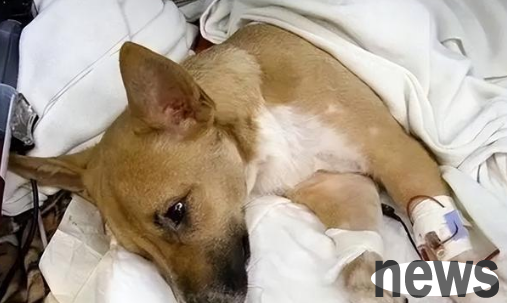At present, raising pet dogs has become a popular fashion and lifestyle. As companion animals, pet dogs can provide special emotional support and life protection for their owners. However, during their growth and development, most pet dogs will inev...
At present, raising pet dogs has become a popular fashion and lifestyle. As companion animals, pet dogs can provide special emotional support and life protection for their owners. However, during their growth and development, most pet dogs will inevitably experience various diseases. Therefore, pet dog breeders should regard the scientific response to canine diseases as a compulsory course. Based on this, it is necessary to use parvovirus disease, a typical and highly-occurring canine disease, as the research object, and explore and discuss its comprehensive prevention and control measures.
01
Causes of the disease

In recent years, parvovirus disease has shown high fulminant and high prevalence in the field of canine breeding in my country, and has a high mortality rate and treatment cost. Therefore, it is necessary to attach great importance to the prevention and treatment of the disease and analyze its pathogenesis to reduce the probability and degree of harm of parvovirus disease in pet dog breeding from the source.
Based on industry experience, there are many reasons for pet dogs to be infected with parvovirus: First of all, sick dogs are the main source of infection for parvovirus disease. After dogs are infected with parvovirus, pathogens may exist in their secretions and excretions. In this context, once a pet dog has contact with a sick dog or has a shared diet, there is a great risk of illness. Secondly, although parvovirus is harmless to people, it can use people as a mechanical medium of transmission. After contacting pet dogs or stray dogs with parvovirus disease, if people do not clean and disinfect themselves, they may also carry the pathogens to their homes, which will further pose a hidden danger of pet dog infection. Again, insects such as flies, mosquitoes, lice can also be used as carriers of parvoviruses. Finally, when pet dogs have decreased immunity, their susceptibility to parvovirus disease will be significantly improved. Factors that cause low immunity in pet dogs in breeding practice involve many aspects, such as changes in ambient temperature, poor diet quality, stress response, failure to perform immunization, etc.
02
Clinical symptoms

After suffering from parvovirus disease, the main symptoms are enteritis and myocarditis. If the disease that the pet dog is enteritis type, it will have symptoms such as increased body temperature, mental depression, loss of appetite, diarrhea and vomiting at the beginning of the disease. Generally speaking, the vomit in the early stage of a sick dog is mainly food. After the contents of the stomach are basically empty, the vomit in the sick dog will turn into yellow or yellow-green digestive fluid.
After this, as the disease course extends and the condition worsens, the sick dog will experience malnutritional symptoms such as weight loss and deep eye sockets, and some sick dogs may experience consciousness disorders. At the same time, diarrhea of sick dogs has worsened, and excrement mostly turns from atherosclerotic stool to sticky and bloody stool, accompanied by a distinct fishy smell. If the sick dog has frequent diarrhea, the anemia will become more and more serious. If the disease that a pet dog is myocarditis type, it will show the characteristics of acute onset and short course of the disease. The sick dogs mostly die within a few hours, and the cure rate is extremely low. In the early stages of the disease, the mental condition and dietary behavior of the sick dogs usually have no significant changes. A small number of sick dogs have symptoms of slightly elevated body temperature and mild diarrhea. In the next few dozen minutes or hours, the disease symptoms of the sick dog will gradually become obvious, and symptoms such as dyspnea and accelerated heartbeat and arrhythmia will appear until death. Myocarditis parvovirus disease mainly occurs in young pet dogs under 2 months of age, and is mostly small and large, with a mortality rate of up to 80%.
03
Comprehensive prevention and control measures
(I) Do a good job in breeding and management of pet dogs
While providing pet dogs with a healthy living environment and high-quality dietary resources, block the transmission of parvoviruses as much as possible. First, we must strictly control the feeding quality of dog food, canine snacks and nutritional supplements to ensure that pet dogs are always in a balanced and sufficient nutritional intake, laying a solid foundation for the development and operation of their immune system. Second, we should try to minimize the stressors of pet dogs, such as avoiding frightened pet dogs, maintaining a constant temperature in the breeding environment, etc., so as not to increase the probability of illness due to stress reactions. Third, we must regularly clean, ventilate, disinfect, insecticide and other work to prevent parvovirus from breeding or spreading in the daily activity areas of pet dogs. Fourth, after raising pet dogs, try to avoid contact with other pet dogs or stray dogs, and manage and protect pet dogs during the walk. Only in this way can the pet dogs avoid contact with parvovirus to the greatest extent.
(II) Implementing the immunization procedure is the key to dealing with animal diseases
When vaccinating pet dogs for this disease, the first vaccination time should be chosen to be over 45 days old in the pet dog, and it is necessary to ensure that the pet dog is in a healthy state. Afterwards, pet dogs will be vaccinated again every 21 to 28 days, and the first year of vaccination is appropriate. In addition, in order to maximize the prevention of pet dogs with parvovirus infection, we should also implement enhancing immunity once every November starting from the second year to ensure that pet dogs have a high level of immunity.
(III) Strengthen attention to dog behavioral activities and mental state

Only by strengthening attention to pet dogs can we ensure the early detection and early treatment of parvovirus diseases. If it is confirmed that the pet dog has parvovirus disease, it is necessary to use ceftriaxone sodium, pyrophyllin and other drugs for antibacterial and antiviral treatment in time, so as to alleviate the impact of parvovirus while preventing the occurrence of secondary infection. On this basis, it is also necessary to prescribe the right medicine based on the specific symptoms of the pet dog. For example, if a sick dog experiences severe symptoms of vomiting, diarrhea, and blood stool, it is necessary to feed it antiemetics, antidiarrheal drugs, and hemostatic drugs, such as methorupramine, gentamicin, hemostatic sensitivity, etc. If the sick dog experiences symptoms such as weight loss, refusal to eat, dehydration, etc., it is necessary to use electrolyte solution, normal saline, glucose solution and other drugs to treat it to prevent the sick dog from facing the risk of death due to physical exhaustion and acidosis.